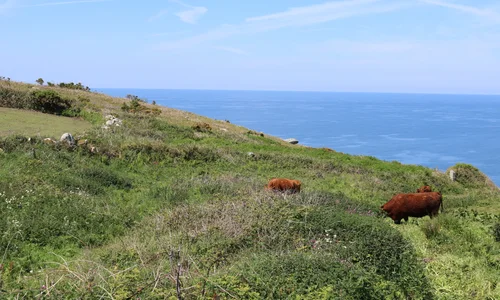 Condensed tannins are present in many of the different foods and drinks we consume each day, such as tea, coffee and also fruits such as strawberries and apples. However, a recent resurgence in their use for livestock production, most notably ruminants, has been prompted by an increase in the popularity of herbal leys. These herbal leys containing tanniferous forages, sainfoin and birdsfoot trefoil for example, provide several additional benefits when fed as part of an existing diet to ruminant animals.
Condensed tannins are present in many of the different foods and drinks we consume each day, such as tea, coffee and also fruits such as strawberries and apples. However, a recent resurgence in their use for livestock production, most notably ruminants, has been prompted by an increase in the popularity of herbal leys. These herbal leys containing tanniferous forages, sainfoin and birdsfoot trefoil for example, provide several additional benefits when fed as part of an existing diet to ruminant animals.
Condensed tannins are valuable when feeding considerable amounts of protein to ruminants, the tannins bind to surplus protein molecules causing a greater amount to pass through the rumen and avoid degradation. This protein is then subsequently digested by the abomasum and small intestine, this is commonly referred to as bye-pass protein and is particularly effective for raising milk protein levels and increasing growth rates in youngstock.
A second benefit of these tannins is a reduction in greenhouse gasses being produced from ruminant livestock, gasses including nitrous oxide, ammonia and methane, all of which are considerably more damaging to the environment than carbon dioxide. The reason for this reduction is linked with the increased protein absorption. Protein that cannot be digested in the rumen can degrade into indigestible forms of gaseous nitrogen and is thus lost to the atmosphere, condensed tannins reduce this protein degradation and thus reduce the gas emissions.
Thirdly, the final benefit of condensed tannins, is their anthelmintic properties. Anthelmintic chemicals are currently the most common method for worm and other parasite control. Condensed tannins disrupt the life cycle of stomach and intestinal worms by preventing them from digesting the sugars they need to survive, ultimately cattle fed on a herbal ley containing condensed tannins, have been seen to have up to a 50% reduction in egg faecal count as apposed to those fed on purely a grass ley.
Written By Joss Dauncey Bsc
References:
Carrasco, J. M. (2017, March 3). Impact of dietary tannins on rumen microbiota of bovines. Retrieved from Semantic Scholar: https://pdfs.semanticscholar.org/c6c5/775525432cf5fd4059491ce4ac605e811031.pdf
Desrues, O. M.-E. (2016, June 10). Anti-parasitic activity of pelleted sainfoin (Onobrychis viciifolia) against Ostertagia ostertagi and Cooperia oncophora in calves. Retrieved from NCBI: https://www.ncbi.nlm.nih.gov/pmc/articles/PMC4901493/
LegumePlus. (2018). Environmental | Legume Plus. Retrieved from Legume Plus: http://legumeplus.eu/environmental



